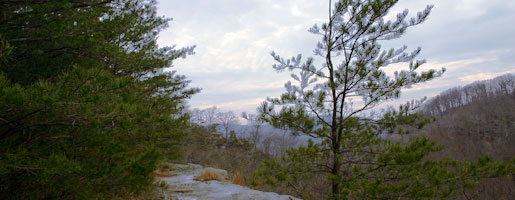
A 90-year-old shortleaf pine stand in Davis Hollow has been favored by a past commercial thinning. It is an even-aged, old field standing with a history of fire. Yet, most of the harvests on the Forest before 1984 have been single tree and group selection. This has led to a decrease in certain tree species, shortleaf pine being one.
We now understand that several factors resulted in landscapes of varied vegetation cover. This includes even-aged stands and favored pyrophytes like:
- Shortleaf pine
- Oaks
- Chestnut
These factors are:
- A pre-European settlement,
- Native American fire use and
- agricultural practices.
To some extent, early settlement practices of fire use and land clearing gave similar results. Selection harvests (and fire protection) have discriminated against such conditions. Uneven-aged silviculture with control of shade tolerant species is currently being used to restore such communities. Prescribed fire is currently being used to restore shortleaf pine communities and promote oak regeneration on the forest. Additionally, fire is used to establish and maintain native warm season grasses and savanna.